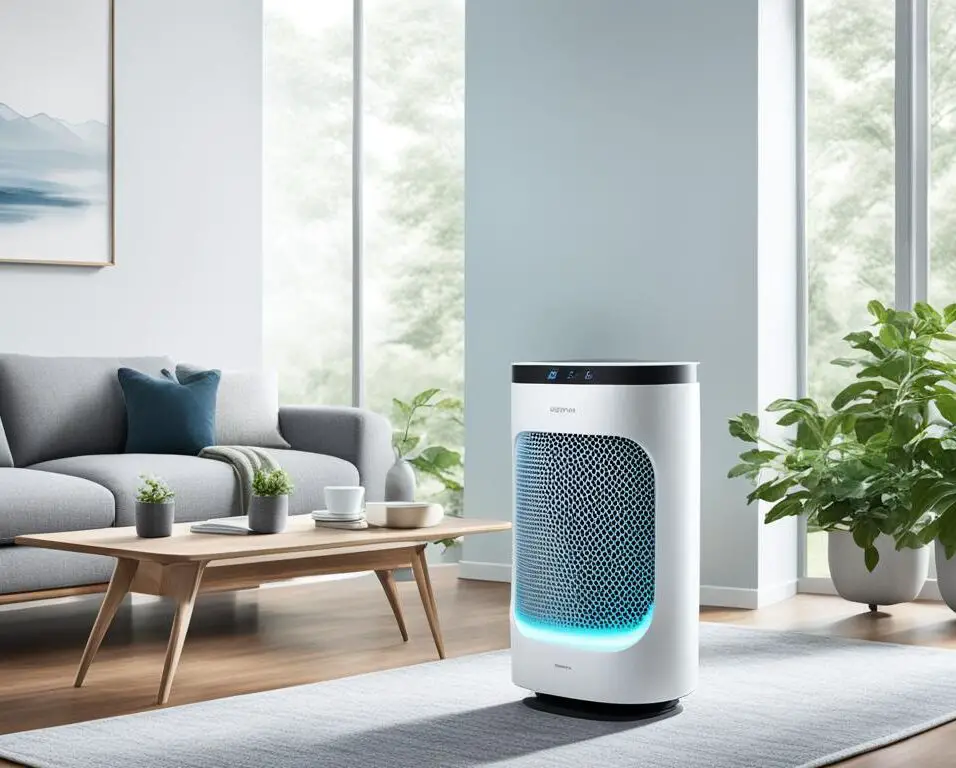Design for Wellbeing: Biophilic Elements for Mental Health
As a professional in the field of design, I am constantly searching for innovative approaches that have a positive impact on mental wellbeing. One concept that has gained significant attention is biophilic design. This design philosophy focuses on incorporating elements of nature into our living and working spaces, promoting a sense of calm and tranquility.
Biophilic design encompasses various elements such as direct connection with nature, the use of natural materials, and the integration of natural patterns and forms. By bringing these elements into our environments, we can create spaces that nurture both the body and the mind.
The benefits of biophilic design for mental wellbeing are undeniable. Studies have shown that exposure to nature and natural elements can reduce stress levels, improve mood, and promote overall tranquility. By incorporating biophilic elements into our designs, we can create spaces that have a positive impact on our mental health.
Key Takeaways:
- Biophilic design brings elements of nature into our living and working spaces.
- It promotes a sense of calm, reduces stress, and improves mood.
- Direct connection with nature, natural materials, and natural patterns and forms are key elements of biophilic design.
- Exposure to nature has proven benefits for mental wellbeing.
- By incorporating biophilic elements into design, we can create spaces that nurture both the body and mind.
The Shift to Holistic Wellness
The concept of employee wellness has evolved from basic health measures to a more holistic approach. Companies are now focusing on creating environments that foster all aspects of health, including mental, emotional, and social wellbeing. This shift to holistic wellness recognizes that employee wellbeing encompasses more than just physical health.
One of the key components of holistic wellness is prioritizing mental health. Employers are offering various resources and initiatives to support their employees’ mental wellbeing. This can include mental health days, stress management workshops, and access to counseling services. By addressing the mental health needs of employees, companies are creating a supportive and nurturing work environment.
Furthermore, promoting social interaction and a sense of community is another important aspect of holistic wellness. Companies are organizing team-building activities, group exercises, and social events to foster connections among employees. This helps create a positive work culture where individuals feel valued, supported, and connected to their colleagues.
Personalization is key to effective wellness programs. Recognizing that each employee has unique needs, companies are tailoring initiatives to cater to individual preferences and goals. This may involve offering a variety of wellness options, such as fitness classes, mindfulness programs, or nutrition counseling, allowing employees to choose what aligns best with their personal wellbeing journey.
Leveraging technology is also playing a significant role in promoting holistic wellness. The use of wearable devices and mobile apps allows employees to track their progress, access valuable resources, and receive personalized recommendations. This integration of technology enhances employee engagement and empowers individuals to take charge of their own wellbeing.
In conclusion, the shift to holistic wellness in the workplace acknowledges that employee wellbeing is multifaceted and extends beyond physical health. By focusing on mental health, promoting social interaction, personalizing wellness initiatives, and leveraging technology, companies are creating environments that prioritize the overall wellbeing of their employees. This approach not only enhances employee satisfaction and productivity but also fosters a positive and supportive work culture.
| Benefits | Approaches |
|---|---|
| Improved employee satisfaction | Mental health support |
| Enhanced productivity and focus | Social interaction and community building |
| Reduced stress and burnout | Personalized wellness programs |
| Positive work culture | Technology integration |
Focus on Mental Health
The importance of mental health in the workplace cannot be overstated. As companies strive to create supportive and inclusive environments for their employees, mental health resources have become a core component of innovative wellness programs.
These resources encompass a range of services and initiatives aimed at promoting mental wellbeing and addressing the unique challenges employees may face. Some examples of mental health resources in the workplace include:
- Access to counseling services: Providing access to professional counseling services allows employees to seek confidential support from trained experts.
- Mindfulness and meditation programs: Introducing mindfulness and meditation practices can help employees reduce stress, improve focus, and cultivate emotional resilience.
- Workshops on building resilience and coping strategies: Workshops that focus on building resilience and teaching effective coping strategies can equip employees with the tools they need to navigate challenging situations.
Creating a work culture that openly discusses and supports mental health is also crucial. Breaking down the stigma surrounding mental health and fostering an environment of empathy and understanding can encourage employees to seek help when needed and promote overall psychological well-being.

Maintaining positive mental health in the workplace is not only beneficial for individual employees but also for the overall productivity and success of the organization. By prioritizing mental health resources and cultivating a work environment that values and supports mental well-being, companies can create a workplace where employees can thrive.
Environmental Wellness
The physical work environment plays a significant role in the health and well-being of employees. Forward-thinking companies are reimagining workspace design to prioritize wellness and create a harmonious atmosphere. By incorporating biophilic design elements, such as natural materials and elements of nature, workplaces can foster a sense of environmental wellness.
Biophilic design refers to the practice of bringing nature indoors, creating spaces that mimic the outdoors. This approach has gained traction due to its numerous benefits, including improved focus, reduced stress levels, and elevated job satisfaction. By integrating nature-inspired elements into the workspace, employees can experience a greater sense of tranquility and rejuvenation.
One aspect of environmental wellness is the incorporation of ergonomic workstations. These workstations are designed with the human body’s natural form and movement in mind. They promote proper posture, reduce strain, and minimize the risk of musculoskeletal disorders. By providing employees with comfortable and supportive workstations, companies can enhance their physical well-being and productivity.
Spaces that Encourage Movement and Collaboration
In addition to ergonomic workstations, it is essential to create spaces that encourage movement and collaboration. Dynamic work environments with open layouts, standing desks, and communal areas promote physical activity and collaboration among employees. By facilitating movement and interaction, companies can foster a sense of community and improve overall well-being.
Benefits of Biophilic Design
Biophilic design has been proven to have numerous benefits for both employees and organizations. Some of the key advantages include:
- Improved focus and productivity
- Reduced stress and anxiety levels
- Enhanced creativity and problem-solving skills
- Promoted well-being and job satisfaction
By creating a workspace that aligns with the principles of biophilic design, companies can positively impact their employees’ mental and physical health, resulting in a more engaged and productive workforce.
Nutrition and Health Education
Educating employees about nutrition and healthy eating is a crucial component of workplace wellness. By providing workshops and resources that focus on nutrition, employees can make informed choices regarding their health and well-being.
The Power of Education
Education plays a vital role in promoting wellness, enabling individuals to understand the impact of nutrition on their overall health. By offering workshops on nutrition and lifestyle choices, companies empower employees to take control of their well-being.
“Education is the most powerful weapon which you can use to change the world.” – Nelson Mandela
When individuals are equipped with knowledge about nutrition, they can make healthier food choices, leading to improved energy levels and overall well-being.
Providing Healthy Meal Options
Some forward-thinking companies go beyond workshops by offering healthy meal options in workplace cafeterias or through catering services. By providing nutritious meals, companies make it easier for employees to adopt healthier eating habits, supporting their overall well-being.

Benefits of Nutrition Counseling
In addition to workshops and healthy meal options, companies can further support their employees’ nutritional needs by offering nutrition counseling services. Nutritionists can provide personalized guidance and advice, helping employees address specific health concerns, such as weight management, dietary restrictions, or chronic conditions.
This comprehensive approach to nutrition and health education contributes to a workplace culture that values employee well-being and fosters healthier lifestyles.
Encouraging Work-Life Balance
Recognizing the importance of work-life balance in overall wellbeing, innovative wellness programs prioritize creating a harmonious balance for employees. This involves implementing various strategies that promote flexibility and the ability to effectively manage personal and professional responsibilities.
One of the primary ways to encourage work-life balance is by offering flexible working hours. This allows employees to customize their schedules to better suit their individual needs. Whether it’s adjusting start and end times or incorporating compressed workweeks, flexible working hours empower individuals to maintain a healthier equilibrium between work and personal life.
“Striving for work-life balance should not be seen as a luxury, but as a necessity for employee wellbeing and productivity.”
Furthermore, remote work options have become increasingly popular in recent years. Technology enables seamless collaboration and communication regardless of physical location, granting employees the freedom to work from home or other suitable environments. This flexibility not only reduces commuting time and stress but also provides an opportunity to better integrate personal and professional commitments.
Policies that discourage overtime and encourage taking regular breaks are another essential aspect of promoting work-life balance. By setting clear boundaries and expectations, companies demonstrate their commitment to the wellbeing of their workforce. Encouraging employees to take breaks, disconnect from work during non-working hours, and prioritize self-care boosts overall morale and reduces the risk of burnout.
Implementing programs that support work-life balance fosters a positive workplace culture that values the holistic wellbeing of employees. Such organizations understand that harmonizing personal and professional lives contributes to improved job satisfaction, increased productivity, and reduced turnover rates.
Benefits of Work-Life Balance
Embracing work-life balance initiatives can yield numerous benefits for both employees and organizations:
- Enhanced mental and physical wellbeing
- Increased job satisfaction and engagement
- Improved productivity and performance
- Reduced stress levels and burnout
- Greater retention rates and talent attraction
Overall, promoting work-life balance is a critical component of any comprehensive workplace wellness program. By offering flexibility, discouraging overwork, and prioritizing the holistic needs of employees, organizations create an environment where individuals can thrive both personally and professionally.
References:
- Brian, T., & Susan, M. (2021). The Value of Flexibility: A Literature Review on Workplace Flexibility. International Journal of Business, Humanities, and Technology, 11(1), 34-42.
- Cooper, C. L., & Quick, J. C. (2020). The Handbook of Stress and Health: A Guide to Research and Practice (4th ed.). Wiley.
- Simpson, M. R. (2018). Workplace Support and Performance, Promoting Work-Life Balance and Wellbeing in Higher Education. Cham: Springer International Publishing.
Conclusion
Incorporating biophilic design elements into our living and workspaces can have a profound impact on our mental wellbeing. By bringing the calming beauty of nature into our environments, we can promote tranquility, reduce stress levels, and improve our overall mood and focus. Biophilic design is not just a passing trend; it is a sustainable and effective approach to enhancing serenity and vitality in our modern lives.
To truly prioritize the holistic wellbeing of employees, it is crucial for companies to embrace holistic wellness approaches. This includes focusing on mental health, creating a healthy work environment, providing education and resources, and encouraging work-life balance. By integrating these elements into their wellness programs, companies can create thriving environments where employees can thrive both professionally and personally.
Biophilic design is a key component of workplace wellness, as it connects employees with nature and fosters a sense of tranquility and rejuvenation. By incorporating elements such as natural light, greenery, and natural materials, companies can create spaces that not only look visually appealing but also contribute to mental wellbeing and overall job satisfaction. Investing in biophilic design is an investment in the mental wellbeing of employees and the success of the organization as a whole.
FAQ
What is biophilic design?
Biophilic design is a concept that brings the calming beauty of nature into living and working spaces by incorporating elements such as direct connection with nature, natural patterns and biomorphic forms, and the use of natural materials.
What are the benefits of biophilic design for mental health?
Biophilic design has proven benefits for mental wellbeing, reducing stress levels, promoting tranquility, and improving mood. It creates a space that nurtures both the body and mind.
How has the approach to employee wellness evolved?
The approach to employee wellness has evolved to encompass a more holistic approach, focusing on mental, emotional, and social wellbeing in addition to basic health measures.
How can companies promote employee wellness?
Companies can promote employee wellness by offering initiatives such as mental health days, stress management workshops, and activities that foster social interaction and a sense of community. Personalization and leveraging technology are also important strategies.
Why is mental health important in the workplace?
Mental health is important in the workplace because it significantly impacts employee wellbeing and productivity. Innovative wellness programs now integrate mental health resources as a core component.
How does the physical work environment impact employee health?
The physical work environment has a significant impact on employee health. Innovative companies are rethinking workspace design to promote wellness, including ergonomic workstations, spaces that encourage movement and collaboration, and incorporating elements of nature through biophilic design.
How can education promote wellness in the workplace?
Education can promote wellness in the workplace by offering workshops on nutrition, healthy eating, and lifestyle choices. Some companies even provide healthy meal options and nutrition counseling to make it easier for employees to adopt healthier habits.
Why is work-life balance important?
Work-life balance is important because it reduces burnout and increases overall wellbeing. Innovative wellness programs encourage employees to find a harmonious balance by offering flexible working hours, remote work options, and policies that discourage overtime and encourage regular breaks.








